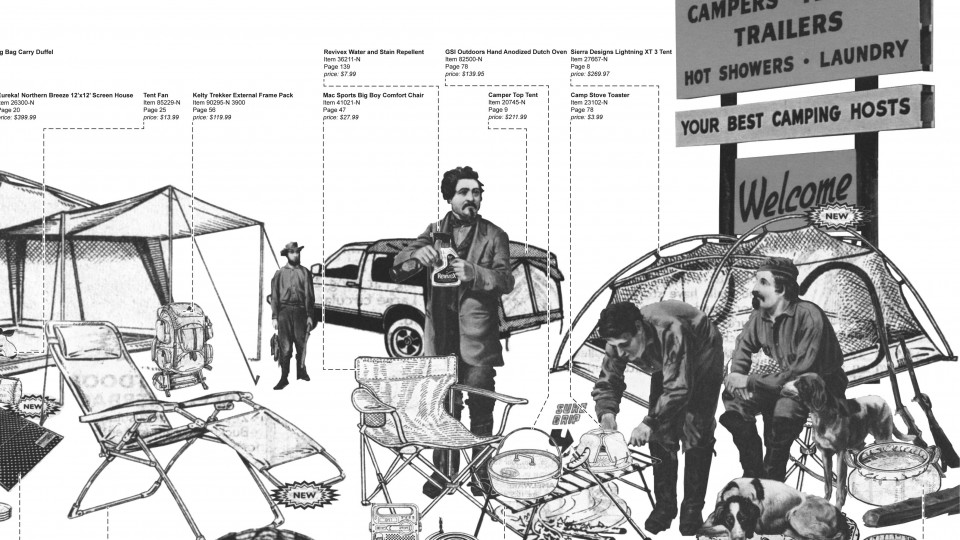· 2 min read
Camping exhibit on display in Architecture Hall

The transformation of camping in the United States is the subject of the new exhibit, “925,000 Campsites: The Commodification of an American Experience,” open through Feb. 7 at the College of Architecture.
The exhibit consists works by Martin Hogue, the William Munsey Kennedy Jr. Fellow at the State University of New York’s Department of Landscape Architecture.
Modern campgrounds are replete with delightful irony. They are serviced by an increasingly sophisticated range of utilities and conveniences, yet marketed to perpetuate the cherished American ideal of the backwoods camp. Serviced by extensive networks of infrastructure and populated with trailers and $300,000 RVs, campgrounds celebrate a unique form of American ingenuity in which intersecting narratives and desires (wilderness, individuality, access, speed, comfort, nostalgia, profit) have become strangely and powerfully hybridized.
Using author-produced maps and diagrams, as well as a collection of archival materials, the exhibit examines how this cultural ideal of rugged American character came to be appropriated and transformed into widely replicated templates and generic spatial protocols.
Tracing the historical arc that connects late-19th-century recreational campers to the Adirondacks with overnighting RVers in a Walmart parking lot, the exhibit posits four key themes that reflect the radical physical and cultural transformations of the campground in the past century: the campsite as the standard unit of management of any campground; the geography and the range of destinations from Yosemite National Park to the KOA on Las Vegas Strip; the rise of services as the primary criteria for campground comparison; and the organization of campgrounds into national systems and franchises. Together these themes illustrate the history of 20th-century American landscape.
Hogue will give a lecture on this and other recent research projects at the Mary Riepma Ross Media Arts Center at 4:30 p.m. Feb. 7. A First Friday reception will follow immediately in the College of Architecture. The exhibit, lecture and reception are free and open to the public.
Exhibit hours are 9 a.m. to 5 p.m. weekdays. Guest parking is available in the Stadium Drive Parking Garage and metered stalls in downtown Lincoln. For more information, go to http://archweb.unl.edu or call 402-472-3560.







